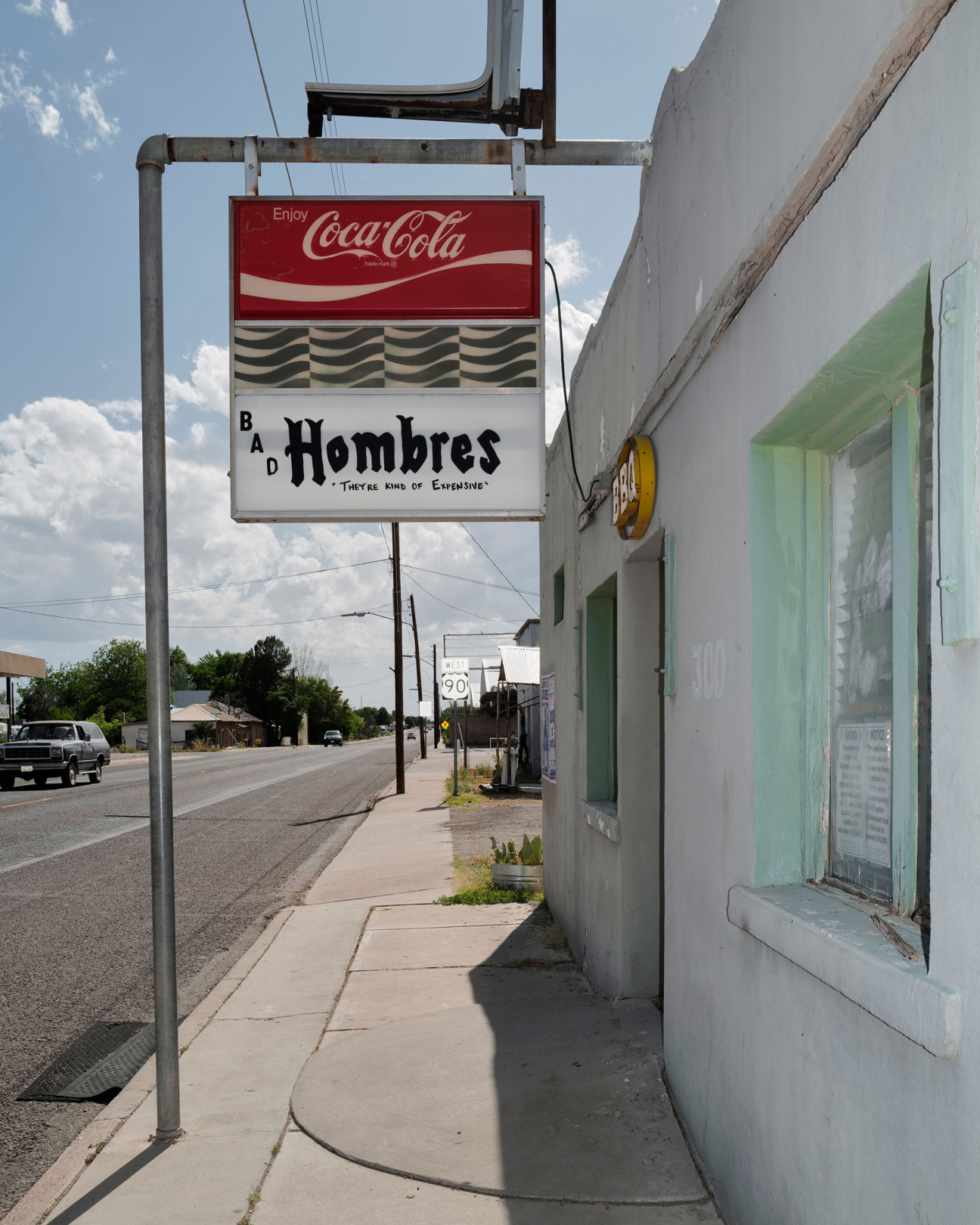Cultured Magazine: How does this project fit into your larger practice?
Douglas Friedman: I put down the fine art side of things to be a commercial photographer. It doesn’t mean that I don’t approach my commercial photography from an artistic or creative standpoint. I really work hard to want every picture of a room or a chair to be beautiful. Then, to be able to spend some time in Marfa and do something for the sake of doing it… it was nice to dip my toe back in the waters of being creative. The endgame is the picture.
CM: Have you ever worked in the service industry?
DF: When I was 15, I was a dishwasher in New York City at a gyro sandwich shop called From Gyro to Eternity. I worked as a waiter, I was a barback, I was a bartender, I was a soda jerk in an ice cream parlor. I excelled at that one but I got fired a lot. I talked too much to the customers and my drinks, I poured them too heavy.
What was the last day of service at Bad Hombres like?
DF: There wasn’t a party. Maybe that’s because—[chuckles]—we were in the middle of a global pandemic. Marfa is a tiny, tiny, tiny little sensitive flower with a hospital that’s three hours away. As a town, as a community, we took the pandemic very seriously. Restaurants were open. They weren’t necessarily seating inside. There wasn’t a big moment of a blowout celebration to commemorate. I went in, they served some burgers, and then it closed.

CM: Do you ever feel like the village historian?
DF: Actually, it’s funny you would say that. Yes, because dear friends of mine had a restaurant in Marfa called The Capri, and I pleaded with them to do a cookbook because I just thought their food was so beautiful. They agreed, and so I was able to just shoot this cookbook that was so much more than a cookbook. It was about the community, it was about West Texas, it was about Northern Mexico. Then the restaurant closed. I got to tell you: This little tiny town changes. It’s constantly evolving. Every time I go back, I’m like, ‘What’s going on here?’ It used to bother me a little bit. Like, ‘Oh, it’s changing. I loved it the way it was.’ Now, I’m learning that this is what Marfa is and to not get too attached because it’s going to change. I’m so glad we had the moment with Bad Hombres and it was sad that it was gone, but something else will happen and now we have this incredible collection of images and we’re able to have this show to raise money for the Presidio County Community Fund, which is important to all of us. We live in a painfully rural part of America, the largest unpopulated landmass and one of the poorest counties in Texas.
CM: How do you describe Marfa to strangers?
DF: Marfa is incredible. I came from New York City and now I live outside of town at the end of a dirt road surrounded by nothing. It gives me a chance to collect myself every couple of months before I head back out into the commercial photography world.
CM: Maybe this is the beginning of a book. Something about Marfa.
DF: It could be. I don’t see myself going anywhere. I’m too wrapped up in this little place. Earlier, last year when I was getting frustrated with the rapid pace of the change in town, I was like, “I’m leaving. I’m going to sell my house and get out of here.” Someone came to town and made me a very generous offer and when presented with the actual reality of leaving successfully, I was like, “Oh God, I don’t think I want to.” I’m going to stay. Blow some more money on that house. Raise some more money for this library and the community fund and keep chugging away at it.










 in your life?
in your life?

